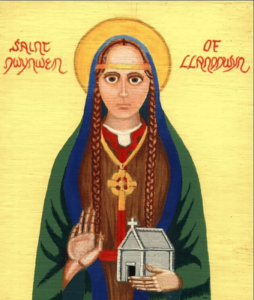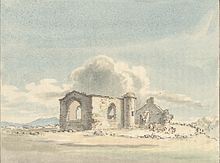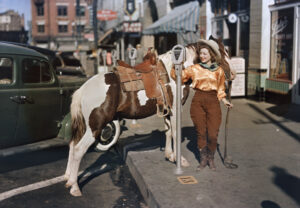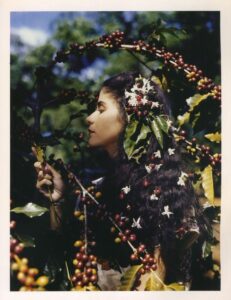Dear Zazie, Here is today’s Lovers’ Chronicle from Mac Tag dedicated to his muse. Follow us on twitter @cowboycoleridge. Rhett
The Lovers’ Chronicle
Dear Muse,
© copyright 2021 mac tag/cowboy coleridge all rights reserved
© copyright 2020 mac tag/cowboy coleridge all rights reserved
lookin’ from the canvas
to the bed and back again,
from one to the other vaguely,
the same question transverses
these thoughts, this vision
realization comes, only then
in silence, what is, what is felt
seems to have happened so often
but only if known what to say
and not one thing, but everything
to you alone, spoken, the source
that binds us to who we are
© copyright 2019 mac tag/cowboy coleridge all rights reserved
been listenin’ to Etta today
a Saturday kinda dreamin’
somethin’, or someone
has a hold on me, still
at last, my lonely days
have just begun
……
a fine one
for buildin’ fences
for puttin’ up walls
even built some
to keep me from myself
got really good
at actin’ the part
got even better
at puttin’ distance
between myself
and anyone
who tried to git close
never knew what it was
to need someone
only ever came to know
distance
© copyright 2018 mac tag/cowboy coleridge all rights reserved
“What is this feeling.”
that is the question
never came across
an answer that satisfied,
tried some good ones though
not just knowin’ the other
perhaps ignorance
or a question of distance
made for this
countless hours
made for this
old memories,
forgot or not
days, old long since…
golden light, surrounds
all that existed,
all that mattered…
but untimely frost,
sever forever
© copyright 2017 mac tag/cowboy Coleridge all rights reserved
 Today is St. Dwynen’s Day. St. Dwynwen is Wales’ patron saint of lovers, although she was rather unlucky in that department after falling head over heels for a man she wasn’t allowed to marry. The 5th-century princess’s heartache led her to dedicate her life to God and pray for true lovers to have better fortune than her own.
Today is St. Dwynen’s Day. St. Dwynwen is Wales’ patron saint of lovers, although she was rather unlucky in that department after falling head over heels for a man she wasn’t allowed to marry. The 5th-century princess’s heartache led her to dedicate her life to God and pray for true lovers to have better fortune than her own.
The original tale has become mixed with elements of folktales and Celtic stories, and so there are a number of variations on the tale. Dwynwen is believed to have been a daughter of King Brychan Brycheiniog, who lived in the 5th century, making her the half-sister of Saint Ninnoc. Her mother may have been Rigrawst. Dwynwen lived in Anglesey.
In the tale told of her, either a young man named Maelon Dafodrill falls in love with, but she rejects his advances; or she is unable to marry him because her father forbade the marriage and had already promised her to someone else. Distraught over her love for Maelon, Dwynwen prayed she would fall out of love with him. An angel provides her with a potion; Maelon turns to ice. God then grants her three requests: that Maelon be released; that, through her, God look after all true lovers; and that she remain unmarried. As a mark of her thanks, she then retreats to the solitude of Ynys Llanddwyn off the west coast of Anglesey to become a hermit until her death, in about AD 460; although it has been written in some texts that she had fled there because of her fear of Maelgwn Gwynedd.
Dwynwen reportedly studied the healing properties of local herbs and thus was able to cure many illnesses of people who sought her from all over Wales.
Dwynwen withdrew to a small tidal island off the southwest coast of Anglesey. (Newborough is the closest town.) There she built a Church; which became known as Llanddwyn, (“Church of Dwynwen”). Its remains can still be seen on Ynys Llanddwyn. There was also Dwynwen’s well, where, allegedly, a sacred fish swims, whose movements predict the future fortunes and relationships of various couples.


| Robert Burns | |
|---|---|

The best-known portrait of Burns,
by Alexander Nasmyth, 1787 (detail) |
|
Today is the birthday of Robert Burns (Alloway, Ayrshire 25 January 1759 – 21 July 1796 Dumfries), also known as Rabbie Burns, the Bard of Ayrshire, Ploughman Poet and various other names and epithets; poet and lyricist. Widely regarded as the national poet of Scotland and celebrated worldwide. He is the best known of the poets who have written in the Scots language, although much of his writing is also in English and a light Scots dialect, accessible to an audience beyond Scotland. He also wrote in standard English, and in these writings his political or civil commentary is often at its bluntest.
He is regarded as a pioneer of the Romantic movement, and after his death he became a great source of inspiration to the founders of both liberalism and socialism, and a cultural icon in Scotland and among the Scottish diaspora around the world. Celebration of his life and work became almost a national charismatic cult during the 19th and 20th centuries, and his influence has long been strong on Scottish literature. In 2009 he was chosen as the greatest Scot by the Scottish public in a vote run by Scottish television channel STV.
As well as making original compositions, Burns also collected folk songs from across Scotland, often revising or adapting them. His poem (and song) “Auld Lang Syne” is often sung at Hogmanay (the last day of the year), and “Scots Wha Hae” served for a long time as an unofficial national anthem of the country. Other poems and songs of Burns that remain well known across the world today include “A Red, Red Rose”, “A Man’s a Man for A’ That”, “To a Louse”, “To a Mouse”, “The Battle of Sherramuir”, “Tam o’ Shanter” and “Ae Fond Kiss”.
His first child, Elizabeth Paton Burns (1785–1817), was born to his mother’s servant, Elizabeth Paton (1760–circa 1799), while he was embarking on a relationship with Jean Armour, who became pregnant with twins in March 1786. Burns signed a paper attesting his marriage to Jean, but her father “was in the greatest distress, and fainted away”. To avoid disgrace, her parents sent her to live with her uncle in Paisley. Although Armour’s father initially forbade it, they were eventually married in 1788. Armour bore him nine children, only three of whom survived infancy.
About 1786, Burns fell in love with Mary Campbell (1763–1786), whom he had seen in church while he was still living in Tarbolton. She was born near Dunoon and had lived in Campbeltown before moving to work in Ayrshire. He dedicated the poems “The Highland Lassie O”, “Highland Mary”, and “To Mary in Heaven” to her. His song “Will ye go to the Indies, my Mary, And leave auld Scotia’s shore?” suggests that they planned to emigrate to Jamaica together. Their relationship has been the subject of much conjecture, and it has been suggested that on 14 May 1786 they exchanged Bibles and plighted their troth over the Water of Fail in a traditional form of marriage. Soon afterwards Mary Campbell left her work in Ayrshire, went to the seaport of Greenock, and sailed home to her parents in Campbeltown.
In October 1786, Mary and her father sailed from Campbeltown to visit her brother in Greenock. Her brother fell ill with typhus, which she also caught while nursing him. She died of typhus on 20 or 21 October 1786 and was buried there.
Verse
- Nature’s law,
That man was made to mourn.- Man Was Made to Mourn, st. 4 (1786)
- Man’s inhumanity to man
Makes countless thousands mourn.
Man was made to Mourn.- Man was Made to Mourn (1786)
- Should auld acquaintance be forgot,
And never brought to min’?
Should auld acquaintance be forgot,
And days o’ auld lang syne?- Auld Lang Syne, st. 1 (1788)
- For auld lang syne, my dear,
For auld lang syne,
We’ll tak a cup o’ kindness yet
For auld lang syne!- Auld Lang Syne, chorus (1788)
- The golden Hours on angel wings
Flew o’er me and my Dearie;
For dear to me as light and life
Was my sweet Highland Mary.- Highland Mary, st. 2 (1792)
- But, oh! fell death’s untimely frost,
That nipt my flower sae early.- Highland Mary, st. 3 (1792)
- Ae fond kiss, and then we sever;
Ae farewell, alas, forever!- Ae Fond Kiss, And Then We Sever, st. 1
- But to see her was to love her;
Love but her, and love for ever.
Had we never lov’d sae kindly,
Had we never lov’d sae blindly,
Never met—or never parted,
We had ne’er been broken-hearted.- Ae Fond Kiss, And Then We Sever, st. 2
My heart’s in the Highlands, my heart is not here,
My heart’s in the Highlands, a-chasing the deer;
A-chasing the wild deer, and following the roe,
My heart’s in the Highlands, wherever I go.
- My Heart’s in the Highlands, st. 1
| Virginia Woolf | |
|---|---|

Virginia Woolf in 1902; photograph by George Charles Beresford.
|
|
Today is the birthday of Adeline Virginia Woolf (Kensington, Middlesex, née Stephen; 25 January 1882 – 28 March 1941 River Ouse, near Lewes, Sussex); writer and one of the foremost modernists of the twentieth century.
During the interwar period, Woolf was a significant figure in London literary society and a central figure in the influential Bloomsbury Group of intellectuals. Her best-selling works include the novels Mrs Dalloway (1925), To the Lighthouse (1927) and Orlando (1928), and the book-length essay A Room of One’s Own (1929), with its dictum, “A woman must have money and a room of her own if she is to write fiction.”
Virginia Stephen married the writer Leonard Woolf on 10 August 1912. Despite his low material status (Woolf referring to Leonard during their engagement as a “penniless Jew”) the couple shared a close bond. In 1937, Woolf wrote in her diary: “Love-making—after 25 years can’t bear to be separate … you see it is enormous pleasure being wanted: a wife. And our marriage so complete.” The two also collaborated professionally, in 1917 founding the Hogarth Press, which subsequently published Virginia’s novels along with works by T. S. Eliot, Laurens van der Post, and others.
The ethos of the Bloomsbury group encouraged a liberal approach to sexuality, and in 1922 she met the writer and gardener Vita Sackville-West, wife of Harold Nicolson. After a tentative start, they began a sexual relationship, which, according to Sackville-West in a letter to her husband dated 17 August 1926, was only twice consummated. However, Virginia’s intimacy with Vita seems to have continued into the early 1930s. In 1928, Woolf presented Sackville-West with Orlando, a fantastical biography in which the eponymous hero’s life spans three centuries and both sexes. Nigel Nicolson, Vita Sackville-West’s son, wrote, “The effect of Vita on Virginia is all contained in Orlando, the longest and most charming love letter in literature, in which she explores Vita, weaves her in and out of the centuries, tosses her from one sex to the other, plays with her, dresses her in furs, lace and emeralds, teases her, flirts with her, drops a veil of mist around her.” After their affair ended, the two women remained friends until Woolf’s death in 1941.
Woolf suffered from severe bouts of mental illness throughout her life and died by suicide by drowning in 1941 at the age of 59.
Prose
“What is this romance?” she mused.
“Ah, that’s the question. I’ve never come across a definition that satisfied me, though there are some very good ones”—he glanced in the direction of his books.
“It’s not altogether knowing the other person, perhaps—it’s ignorance,” she hazarded.
“Some authorities say it’s a question of distance—romance in literature, that is—”
“Possibly, in the case of art. But in the case of people it may be—” she hesitated.
- Night and Day (1919).
Dearest,
I want to tell you that you have given me complete happiness. No one could have done more than you have done. Please believe that.
But I know that I shall never get over this: and I am wasting your life. It is this madness. Nothing anyone says can persuade me. You can work, and you will be much better without me. You see I can’t write this even, which shows I am right. All I want to say is that until this disease came on we were perfectly happy. It was all due to you. No one could have been so good as you have been, from the very first day till now. Everyone knows that.
V.
- Letter to Leonard Woolf (28 March 1941), from The Virginia Woolf Reader (1984) edited by Mitchell A. Leaska
Writing is like sex. First you do it for love, then you do it for your friends, and then you do it for money.
I feel so intensely the delights of shutting oneself up in a little world of one’s own, with pictures and music and everything beautiful.
And today is the birthday of Luis Marden (born Annibale Luigi Paragallo) (January 25, 1913 – March 3, 2003); photographer, explorer, writer, filmmaker, diver, navigator, and linguist who worked for National Geographic Magazine. He worked as a photographer and reporter before serving as chief of the National Geographic foreign editorial staff. He was a pioneer in the use of color photography, both on land and underwater, and also made many discoveries in the world of science.
Though he officially retired in 1976, Marden continued to write occasional stories. In total, he wrote more than 60 articles for the magazine.
Gallery

A cowgirl puts a nickel in an El Paso parking meter to hitch her pony, October 1939.

Two young women stand near a turning aircraft propeller, 1940.

Coffee queen
Mac Tag

No Comments on "The Lovers’ Chronicle 25 January – distance – St. Dwynen’s Day – verse by Robert Burns – birth of Virginia Woolf – photography by Luis Marden"